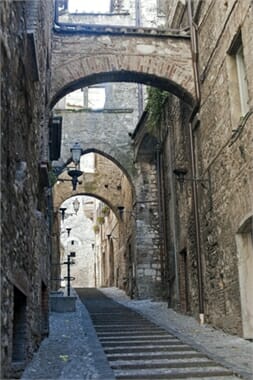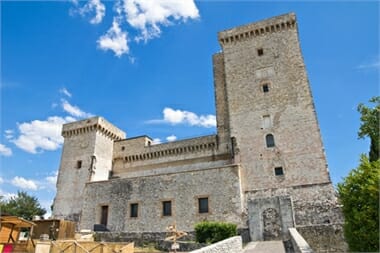Places to visit in Italy – Tourist attractions
History, art and culture of Italy – Narni Umbria
Italy has the good fortune to be able to boast many places of interest due to its natural beauty seen in the variety of landscapes and due to its long and varied history which has left signs of culture and art throughout the country. Of course there are the indisputable artistic beauties, monuments and architecture of the major cities and the natural beauty of the famous coasts, mountains and lakes, but there is another Italy that is hidden from the main tourist routes and areas. In this section Road to Italy aims to present to the reader a variety of hidden treasures throughout Italy. We hope that this collection of monuments, destinations, museums and areas of natural beauty will be seen as suggestions to enrich your holiday in Italy creating for the visitor unique and unforgettable experiences.

Narni – Umbria
Located just 55 miles north of Rome in the region of Umbria there is the small town of Narni. Built on a spur of limestone, the town has small and narrow streets of medieval origins often so narrow as to allow only the passage of pedestrians. The origins of this ancient city, founded by the Umbrians, was once a Roman colony, and then in the Middle Ages became an important independent commune under the name of Narnia.
You can breathe the medieval atmosphere in the wonderful piazzas of the town. The Priori square with the Town Hall and its beautiful Loggia. Piazza Garibaldi once called Piazza del Lago (Piazza of the Lake) because of the presence of an ancient cistern of Roman origin. Today you cannot see the cistern anymore but in its place stands the Cathedral of St. Juvenal and the flowing waters from the cistern that flows out of a fountain dating from the 1400’s. There is also the bridge of Augustus with its Roman origins and the Fortress Albornoziana that dominates the city from above of Narni and also the gorges of the river Nera.
A fascinating trivia about Narni is that it is believed to be the inspiration for the imaginary city of C. S. Lewis where he set his cycle of adventures for children the “Chronicles of Narnia”. There are some sites in the town that appear to have an affinity with the book. The Augustus Bridge which is of Roman origin strikes a resemblance with the “stone bridge” of the story. The source of the river Stifone with its turquoise water is similar to the “lake of the turquoise waters” in the book. Finally there is the Albonrnoziama fortress which recalls the castle in the Narnia story with its secret passage through the door of the cabinet which leads to the magical underground world.

This under ground world is present in Narni and was discovered only thirty years ago by a group of local caving enthusiasts. The first cave revealed a church dating from the 300’s with amazing frescos of the image of the Archangel Gabriel. Another cave revealed the torture chamber during the Middle Ages where prisoners of the court of the inquisitionwere tortured. The history of the trials and prisoners of Narni are still in documents held at Trinity College in Dublin and at the Vatican archives. There are cells where the prisoners were held and one in particular where a guard of the Vatican was imprisoned. In this cell the prisoner created fascinating and at the same time disturbing images on the walls of religion, alchemy and esoteric symbols. In yet another cave was discovered the crypt of the twelfth century and the apse of the church of Santa Maria Maggiore, once the Cathedral of Narni. Narni is well worth a stop on your travels in Italy.
